#spiral wound
Explore tagged Tumblr posts
Text
Spiral Wound Gaskets vs. Other Gasket Types: A B2B Comparison
In industries where maintaining a leak-free system is critical, gaskets play a vital role in sealing connections between components. The choice of gasket can significantly affect the performance, safety, and cost-efficiency of a business's operations. For manufacturers, suppliers, and B2B professionals, understanding the differences between various gasket types is essential for making informed decisions.
In this article, we'll take an in-depth look at spiral wound gaskets and compare them with other popular gasket types, including ring-type joint gaskets, rubber gaskets, and metallic gaskets. We'll explore their design, advantages, disadvantages, and best-use scenarios to help you decide which gasket type suits your specific needs.
What Are Spiral Wound Gaskets?
Spiral wound gaskets are a type of metallic gasket that consist of a combination of metallic and filler materials, wound in a spiral form. This design creates a highly effective seal that can withstand extreme temperatures, high pressures, and chemical exposure. The metal provides structural strength, while the softer filler material enhances sealing capabilities by filling surface imperfections on flange faces.
Key Features of Spiral Wound Gaskets:
Materials: Typically made of stainless steel or other high-grade alloys combined with flexible graphite, PTFE (polytetrafluoroethylene), or other filler materials.
Design: The spiral construction allows for flexibility and resilience, enabling the gasket to conform to flange faces under pressure.
Temperature and Pressure Resistance: Capable of handling temperatures from -200°C to over 500°C and pressures up to 250 bar, making them ideal for critical applications.
Best Use Cases:
Spiral wound gaskets are widely used in the petrochemical, oil and gas, power generation, and chemical processing industries. They are particularly suited for applications involving extreme temperature fluctuations, high-pressure steam, and corrosive media.
Comparing Spiral Wound Gaskets to Other Gasket Types
Now that we’ve established the basics of spiral wound gaskets, let’s compare them with other common gasket types, highlighting the differences in performance, durability, cost, and applications.
1. Spiral Wound Gaskets vs. Ring-Type Joint (RTJ) Gaskets
Ring-Type Joint (RTJ) gaskets are solid metallic gaskets primarily used in high-pressure applications such as oilfield and pipeline systems. They are often made from materials like carbon steel, stainless steel, or inconel.
Comparison:
Design and Structure:
Spiral wound gaskets feature a flexible, layered design, whereas RTJ gaskets are solid metal rings that rely on compression to form a seal.
Sealing Capabilities:
Spiral wound gaskets offer better performance in systems where there are uneven surfaces or minor imperfections on flange faces due to their filler material, while RTJ gaskets work best in applications with smooth, precise flange surfaces.
Pressure and Temperature:
Both gasket types can withstand extreme pressures and temperatures, but RTJ gaskets are generally used in the most high-pressure environments, such as valve bonnets and flange assemblies in the oil and gas industry.
Installation and Maintenance:
Spiral wound gaskets are relatively easier to install due to their ability to adjust to flange imperfections. RTJ gaskets, being solid metal, require perfect alignment and tighter bolting, making installation more challenging.
Cost:
RTJ gaskets tend to be more expensive due to their solid metal construction, but they offer excellent durability in highly demanding environments. Spiral wound gaskets, while still robust, tend to be more cost-effective for applications requiring frequent maintenance or replacement.
Best Use Cases:
Choose spiral wound gaskets for systems with fluctuating pressures and uneven flange surfaces. Opt for RTJ gaskets in high-pressure, precision applications like subsea pipelines and oil drilling.
2. Spiral Wound Gaskets vs. Rubber Gaskets
Rubber gaskets are made from elastomeric materials such as neoprene, EPDM, silicone, and nitrile. These gaskets are widely used in less demanding applications such as water systems, HVAC units, and general industrial processes.
Comparison:
Design and Structure:
Rubber gaskets are soft and flexible, whereas spiral wound gaskets have a more complex, resilient metallic design. Rubber gaskets are highly compressible and can conform to most surfaces but lack the durability of spiral wound gaskets.
Sealing Capabilities:
While rubber gaskets are effective at sealing under low-pressure conditions, spiral wound gaskets provide superior sealing under high temperatures, high pressures, and harsh chemicals.
Temperature and Pressure:
Rubber gaskets are generally limited to lower temperature ranges (typically -40°C to 120°C) and cannot handle the extreme pressure environments that spiral wound gaskets can withstand.
Durability and Longevity:
Rubber gaskets degrade over time when exposed to extreme temperatures, oils, and chemicals. In contrast, spiral wound gaskets are designed to resist such conditions and have a longer service life in harsh environments.
Cost:
Rubber gaskets are significantly cheaper than spiral wound gaskets, making them a cost-effective solution for non-critical applications. However, frequent replacement may be required, driving up the long-term costs.
Best Use Cases:
Rubber gaskets are ideal for low-pressure applications, such as plumbing, HVAC systems, and food processing equipment. Spiral wound gaskets should be used for more demanding applications that require resilience against temperature, pressure, and chemicals.
3. Spiral Wound Gaskets vs. Metallic Gaskets
In addition to spiral wound gaskets, the term metallic gaskets encompasses other types of gaskets made entirely from metal, such as corrugated metal gaskets, jacketed gaskets, and metal-reinforced gaskets.
Comparison:
Design and Structure:
Spiral wound gaskets are a hybrid of metallic and non-metallic materials, while other metallic gaskets are typically all-metal or have metal jackets with soft filler cores.
Sealing Capabilities:
Spiral wound gaskets offer greater flexibility due to their mixed material design. Other metallic gaskets provide less flexibility and may not conform as well to imperfect flange surfaces.
Temperature and Pressure:
Both spiral wound and metallic gaskets can endure extreme temperatures and pressures, but spiral wound gaskets tend to perform better under fluctuating conditions due to their layered construction.
Installation and Maintenance:
Spiral wound gaskets are easier to install and can recover from stress and pressure cycles more effectively. All-metal gaskets are less forgiving and require more precise installation techniques.
Cost:
Depending on the type of metal and complexity of the design, metallic gaskets can range in cost. Spiral wound gaskets tend to be moderately priced but offer a higher degree of versatility and performance.
Best Use Cases:
Choose spiral wound gaskets for systems subject to frequent pressure and temperature changes. Metallic gaskets are better suited for static sealing applications where durability and resistance to high stress are essential.
Key Considerations for Choosing the Right Gasket
When selecting a gasket for your business, consider the following factors:
Application Requirements: Understand the temperature, pressure, and chemical exposure levels in your system.
Cost vs. Longevity: While cheaper gaskets like rubber may seem economical upfront, they may lead to higher costs due to frequent replacements. On the other hand, higher-performance gaskets like spiral wound gaskets offer longer service life in demanding environments.
Installation and Maintenance: Consider the ease of installation and the required maintenance. Spiral wound gaskets, for example, offer easier installation compared to solid metallic gaskets but still perform under harsh conditions.
Conclusion: Why Spiral Wound Gaskets Stand Out
In a B2B context, selecting the right gasket type can significantly impact operational efficiency, safety, and cost management. Spiral wound gaskets stand out for their versatility, durability, and excellent performance in high-temperature, high-pressure, and corrosive environments. While RTJ gaskets provide unparalleled strength in precision applications, and rubber gaskets are cost-effective for less demanding uses, spiral wound gaskets offer the best of both worlds with their unique combination of metal and filler materials.
Whether you're in the oil and gas sector, chemical processing, or general manufacturing, spiral wound gaskets provide the reliability and resilience that businesses need to maintain seamless operations, reduce downtime, and improve system longevity.
0 notes
Text

re-listened to this episode recently and i was Compelled to make art
#michael distortion my beloved#tma#the magnus archives#tma spoilers#tma spiral#magnus archive fanart#magnus archives#tma podcast#tma fanart#michael distortion#michael shelley#jonathan sims#the archivist#helen richardson#not!them#not!sasha#the distortion#the spiral#the stranger#the eye#fanart#art#digital drawing#digital art#artists on tumblr#cw blood#tw wounds#tw eyestrain#tw bright colors#do not steal
55 notes
·
View notes
Text



#i think about this all the time#and do i think he's letting his guard down because he thinks he's going to die? absolutely#but the complete contrast from the hug at the end of 8.12 to this does send me spiraling#it's just these moments of vulnerability where he's beginning to let clara in#and while that does end up catastrophic later as he comes to depend far too much on her in this needy/desperate way#i live for the development of this toxicity#it's just so interesting to watch it all unfold#to watch this codependency deepen and fester like a wound#doctor who#dwedit#dwgifs#dw companions#twelve#twelfth doctor#clara oswald#twelveclara#whouffaldi#dws9#episode: the magician's apprentice#peter capaldi#jenna coleman#gif warning
749 notes
·
View notes
Text
A thought I had today...come walk with me...
If Talanah had stayed at the base in HFW--as we now know was the original plan--one would assume that the flower would still be her gift for Aloy after finishing her Companion Quest™, just like the rest of the gang. Which by itself is enough to make me wanna put my head through walls until I pass out, but also consider--
What might Aloy's comment have been the first time she scanned it?
"I'm really glad Talanah stayed. It seems like it's cheering her up after everything. Makes me happy to get to spend more time with her, too."

#just the implied 'this flower is for you' conversation would be enough to give me a mortal wound#besties who wants to join me in this spiralling#slappin my clown shoes all over the tumblr#honk honk#horizon forbidden west#aloy x talanah#aloy#talanah khane padish
136 notes
·
View notes
Text
Nya should be given Jay’s gun from his time as Agent Walker and then keep it on her because it’s something that belonged to him.
Except lightning is a volatile element, and Jay is not Jay, he’s Rogue.
And in a moment of desperation, in a need to survive, in a need to protect, she pulls out the gun.
So maybe thats why Jay could be given a fake leg idk bro
#lego ninjago#ninjago#love the jay has a fake leg headcanon#the angst potential of Jay later then slolwy remembering her#and realising this was his own doing#but a small part of him blames her for him losing his leg#but he doesn’t hate her??#i love making characters emotionally confused#but i would love it if they made nya desperate enough to give jay a fatal wound#maybe not with the whole fake leg thing#but something bad enough to make her actually break down#and hes just terrified because he can’t possibly be this weak#he cant#can he??#and then they spiral into a mess#would make their reconciliation so much better though#nya ninjago#ninjago nya#nya smith#nya jiang#ninjago jay#jay ninjago#evil jay#jaya#jay walker#rogue ninjago#he has so many tags now#agent walker#the administration#gun
19 notes
·
View notes
Text
wanting to post art because i post fucking everything i draw and i love attention vs it being a big stupid spoiler for me and chestons dumb crossover au
#i can tell you this: it has spiraled so far out of hand its only partially about the toxic yuri anymore#let me put sparks in cute little outfits..... Ignore the various stab wounds [nobody knows what im talking about]#.....#maybe ill just upload it to th
48 notes
·
View notes
Text
There is a little creature inside my heart that is now constantly screaming “YOU DON’T GET IT!!!!!!!!!! WE ARE SHACKLED AND DOOMED AND ITS ALWAYS BEEN THIS WAY!!!! YOU DON’T KNOW THE HISTORY!!!! YOU DON’T KNOW WHERE WE HAVE BEEN!!!!!!” whenever I see anything gay like a little conspiracy theorist only he’s right 😞
#look at me spiral in real time over the weight of our history and how we are trapped in the perception of community and homophobia#stare in wonder at my decent into turmoil over the wounds we have inflicted upon ourselves and continue to do so#gaze upon my sad bewilderment to the knowledge this is insular and those outside of it do not know and are not weighed down by it
11 notes
·
View notes
Text
.
#i often forget bc i dont think i realized at the time#how hard the 2016 election spilled over into the breakdown post bbcs s4 too#and that whole schism#i spent the entire first 5 months of the trump presidency in the craziest depression fog rver#and like that open nerve made me shy away from the bbcs discussion#in much the same way i know if things go bad rn#im going to have to batten down the hatches and brace myself for doomerism#bc i know if i slip into that im just gonna have a nervous breakdown and that wont be helpful for anyone#a huge nervous breakdown death spiral is how i wound up a year after the 2016 election#almost to the day iirc?#coincidentally enough#oh ntm me experiencing hurricane harvey that year?#interesting how hurricanes and stress and social calamity and political unrest follow each other
12 notes
·
View notes
Text







this scene is very special to me because, aside from the sweetness of lucrezia being worried sick about juan, seeing him riding out against the french instead of turning his back and running, he told lucrezia to go on with him because he won't surrender even after seeing the papal army getting butchered before his eyes and knowing they're outnumbered and got no chance in the war... it just gets me so bad because he's just a kid who doesn't have the devious nature that sums up the borgia family and is already weak and feels inadequate about his own position because he has a lot to prove, yet he tried his best to make his family and rome proud and was even willing to sacrifice himself to win the fight if lucrezia didn't convince the french to spare his life.
#the fact that he came back with his eyes swollen from crying and humiliation was heartbreaking#and rodrigo added to the wound by yelling at him and blaming him for *checks notes* the army being outnumbered by the french?? alright!!#and since that scene juan slowly but surely was starting his downward spiral#the borgias#juan borgia#the borgias meta#lucrezia borgia#period drama#tv shows#text post
22 notes
·
View notes
Text

Dark Sun!
#nobt#sun and moon show#sams#tsams#lunar and earth show#fnaf#art#laes#Dark sun#evil sun#Soleil#drawing#digital drawing#I'm gonna hate ever having to draw this again#spirals#wounds#glasses
15 notes
·
View notes
Text
Spiral Wound Gaskets: A Versatile Sealing Solution
Spiral wound gaskets are a popular type of mechanical seal used in various industries to prevent leakage between two joined surfaces. These gaskets are constructed by wrapping layers of preformed metal strips around a center core, creating a resilient and adaptable seal.
How Spiral Wound Gaskets Work
The unique design of spiral wound gaskets allows them to compress and conform to uneven surfaces, ensuring a tight seal. The metal strips used in the construction can be made from various materials, including stainless steel, graphite, and Inconel, each with its own specific properties and applications.
Key Advantages of Spiral Wound Gaskets
Versatility: Spiral wound gaskets can be used in a wide range of applications, including high-pressure and high-temperature environments.
Resilience: Their design allows for easy compression and recovery, making them suitable for dynamic sealing applications.
Adaptability: Spiral wound gaskets can accommodate variations in flange thickness and surface irregularities.
Corrosion Resistance: Depending on the materials used, these gaskets can offer excellent resistance to corrosion and chemicals.
Long Service Life: Spiral wound gaskets are known for their durability and long service life.
Applications of Spiral Wound Gaskets
Spiral wound gaskets are commonly used in the following industries:
Oil and Gas: Sealing pipelines, valves, and flanges in oil and gas production and refining.
Chemical Processing: Sealing equipment and vessels in chemical plants.
Power Generation: Sealing components in steam turbines, boilers, and other power generation equipment.
Pulp and Paper: Sealing pipes and valves in pulp and paper mills.
Food and Beverage: Sealing equipment in food and beverage processing plants.
Choosing the Right Spiral Wound Gasket
When selecting a spiral wound gasket, it is essential to consider factors such as:
Pressure: The operating pressure of the system.
Temperature: The temperature range of the application.
Fluid Compatibility: The compatibility of the gasket materials with the fluid being sealed.
Flange Type: The type of flanges being joined.
Surface Finish: The surface finish of the flanges.
By carefully considering these factors, you can choose the most appropriate spiral wound gasket for your specific application.
Conclusion
Spiral wound gaskets are a versatile and reliable sealing solution that has found widespread use in various industries. Their adaptability, resilience, and long service life make them a popular choice for a wide range of applications.
0 notes
Text

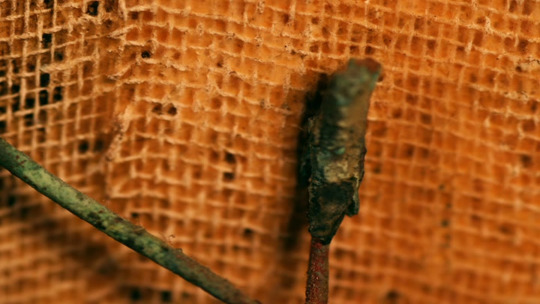


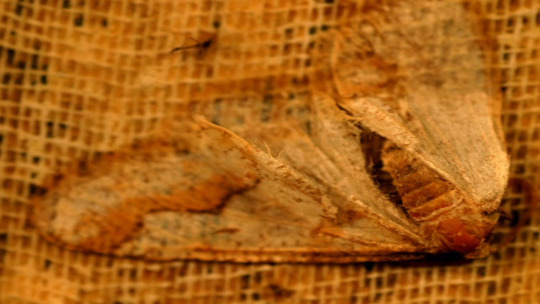
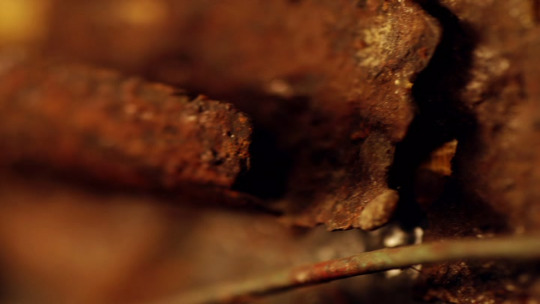

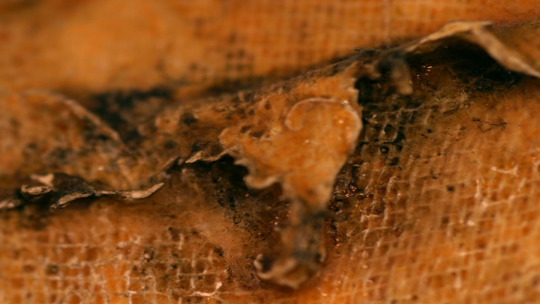
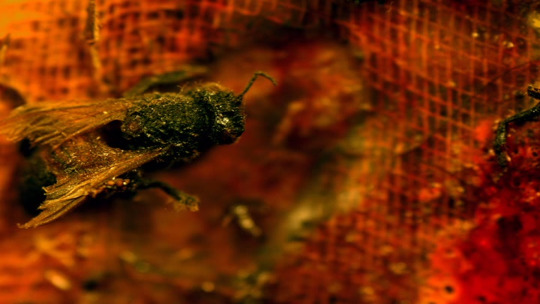

Part 1. From Dual Disc-dvd the downward spiral deluxe edition 2004 macro photos of the work of russell mills "Wound" (for obvious reasons it is called that way)
#nine inch nails#the downward spiral#2004#nin#trent reznor#russell mills#art work#wound#dual disc#dvd#deluxe edition
24 notes
·
View notes
Text

First self ship art in YEARS... Tdb has done something to my brain....
#tokyo debunker#haku kusanagi#self ship#yumeship#yume#I've literally never mentioned haku on here but. I like him.#inspired by a deranged spiral of events that involved me drawing haku out of pure desperation#← got hurt today and went “haku would help me care for my wounds....”#art tag
9 notes
·
View notes
Text
but what if Double Life Pearl was bare foot? First to better feel the cold, and cause more damage to Scott, then because her feet were so numb she just... forgot. Cuts and scrapes start to build up- the frost bite starts to set in. By the end her feet are mangled and more scar tissue than skin.
To the others its just one more sign she's going insane- that she's becoming a Witch. As wild and dangerous as her wolves.
(And what if... what if the Mounders made her shoes? At the very beginning, when hers broke or tore or something. What if Bdubs and Mumbo pooled their resources and made her nice boots that are a bit clunky and sad looking, but that she refuses to take off for the rest of the series)
#I was given a Vision#like... all the lifers would be in bad shape by the ends of a season#but double life Pearl?#causing herself damage on purpose#spiraling in her own loneliness#not a single person to help her sew patches in her clothes or tend her wounds?#Do You See#life series#pearlescentmoon#double life#double life pearl
19 notes
·
View notes
Photo

Game over
#blood#gunshot wound#hes not dead#ride the cyclone#saw#ride the spiral#my art#mischa bachinski#AUGH#THIS TOOK FOREVER AND ITS 12 AM RN#BUT I FINISHED IT#AND I LOVE HOW IT TURNED OUT#updated with tears whoopsie I forgot those
75 notes
·
View notes
Text
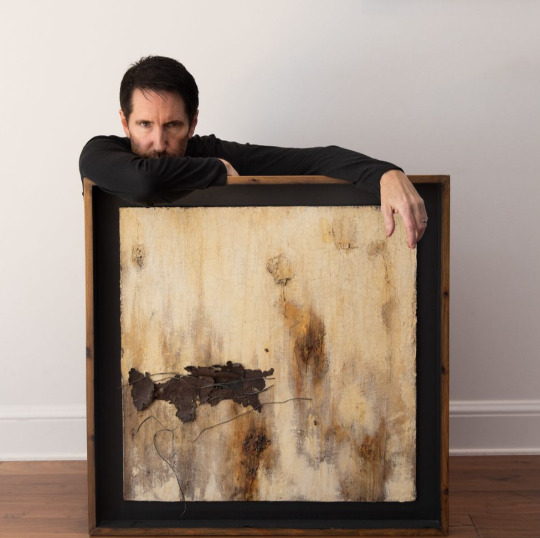
“Spending too much time looking backwards feels dangerous to me, but this day on the calendar caught my attention. Has it really been that long, old friend? I just spent an hour listening to this time capsule of what 28 year old me had to say, and it still excites me and breaks my heart. Be kind to yourselves. Hope to see you soon." TR 3.8.24
Trent Reznor posted this on Instagram to commemorate the 30th anniversary of The Downward Spiral. He is pictured with the album cover designed by Russell Mills titled "Wound".
Nine Inch Nails | Instagram
#the downward spiral#nine inch nails#nin#trent reznor#russell mills#wound#tds era#industrial rock#goths of tumblr#goth aesthetic#90's music#90's rock#1994#90's alternative
12 notes
·
View notes